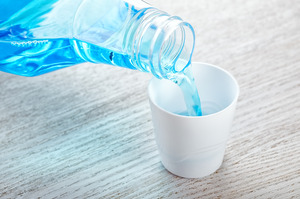
Gum disease is one of the most common oral health problems that there is. It’s estimated that around 50% of adults suffer from the condition to some extent, and statistically speaking their risk only increases as they get older.
It also happens to be one of the most complex oral health problems that there is, with a variety of treatments suited to dealing with the condition at different stages of development. Chlorhexidine gluconate, for example, is a popular treatment that’s prescribed by all kinds of oral health professionals for periodontal illness. If you’re curious, here’s what you should know about it.
What is Chlorhexidine Gluconate?
Chlorhexidine is an antibacterial substance used in a variety of contexts as a disinfectant, prized for its ability to clean the skin, wounds, and even surgical instruments. In a dental context, Chlorhexidine gluconate is used by periodontists to remove plaque, prevent cavities, and treat gum disease. It is usually administered through a prescription mouthwash, making it easy to incorporate into daily dental hygiene.
How Does It Work?
If you aren’t aware, plaque deposits are made up of bacteria. Gum disease typically refers to an infection caused by these plaque deposits. Chlorhexidine gluconate is capable of mitigating the growth of bacteria along the gum line, which makes it an effective method of controlling gum disease.
Usually, medicated mouthwash isn’t sufficient to treat periodontal disease on its own; it can only control its growth. That being the case, it’s usually used in conjunction with scaling, root planing, and other treatments. It’s also not a substitute for other kinds of dental hygiene like brushing and flossing.
What to Watch For While Using Chlorhexidine Gluconate Mouthwash
Short term, there are very few risks associated with Chlorhexidine gluconate. Most patients notice that the mouthwash has a bitter taste; unfortunately, using water to try and rinse it away will only make it worse, and will weaken the effects of the mouthwash. Some patients also find that their sense of taste is altered a bit by the mouthwash, though this should only last for a few hours at most after its use.
Long term, Chlorhexidine gluconate can be associated with some unpleasant side effects, like an increase in tartar buildup or stains to your teeth. For this reason, you should use this medication only as directed by a medical professional and should meet with them every six months so that they can check on your condition.
About the Author
Dr. Zachary Carnow learned what it means to be a dentist from his father and grandfather, two men who dedicated their lives to the field. Using his expertise as a periodontist, he aims to help patients in Frisco get the care that they need to have healthy, beautiful smiles. Dr. Carnow received his dental degree from the University of the Pacific Arthur A. Dugoni School of Dentistry and trained in periodontics at the Tufts University School of Dental Medicine.
If you have any questions about treating gum disease, he can be reached at his website or by phone at (214) 619-4990.
